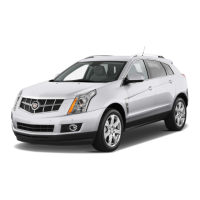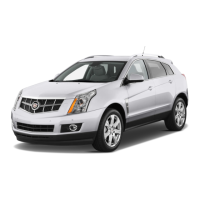
Do you have a question about the Cadillac 2012 Cadillac CTS-V and is the answer not in the manual?
| Brand | Cadillac |
|---|---|
| Model | 2012 Cadillac CTS-V |
| Category | Automobile |
| Language | English |
Covers basic information for starting and driving the vehicle, including keyless entry.
Covers the use of keys, keyless entry systems, and manual/power door locking mechanisms.
Covers theft-deterrent features, including anti-theft alarm and immobilizer systems.
Offers detailed guidance on the proper use, importance, and types of safety belts.
Details airbag locations, deployment conditions, and safety precautions for airbag-equipped vehicles.
Provides critical safety information on selecting, securing, and using child restraint systems.
Details the meaning and function of various warning lights, gauges, and indicators on the instrument cluster.
Explains the Driver Information Center (DIC), its operation, displays, and vehicle messages.
Covers AM-FM radio operation, control buttons, station selection, and audio settings.
Explains Bluetooth connectivity for hands-free calling, voice recognition, and phone number storage.
Explains fundamental driving controls like braking, steering, and accelerating for proper vehicle handling.
Provides guidance on how to handle skidding and regain control of the vehicle.
Covers new vehicle break-in procedures, ignition positions, and engine starting methods.
Covers the Antilock Brake System (ABS) and its function in preventing skids.
Details how to use cruise control, including setting, resuming, and ending the feature safely.
Explains the function, operation, and error messages of the rear vision camera system.
Provides essential information on recommended fuel types, California requirements, and foreign fuel considerations.
Explains how to perform basic maintenance checks and when to seek professional service.
Covers engine oil selection, checking levels, and the engine oil life system for proper maintenance.
Explains the cooling system, coolant types, checking levels, and managing engine overheating.
Discusses disc brakes, wear indicators, brake pedal travel, and brake fluid requirements.
Explains the function of fuses and circuit breakers and how to check and replace them.
Covers tire maintenance, selection, and safety, including pressure, rotation, and wear.
Discusses tire quality, maintenance, and factors affecting tire wear.
Emphasizes the importance of correct tire pressure for safety, performance, and fuel economy.
Explains the TPMS operation, telltale lights, and malfunction indicators.
Details how the TPMS works, including sensor mounting and matching procedures.
Guides on inspecting tires for wear, damage, and when replacement is necessary.
Helps identify signs that indicate when tires need replacement due to wear or damage.
Offers tips on what to expect and how to handle a flat tire, including safe stopping procedures.
Explains the temporary use and operation of the tire sealant and compressor kit.
Provides essential safety steps and procedures for jump starting a vehicle with a dead battery.
Covers general towing information, including towing a disabled vehicle and recreational vehicle towing.
Provides a detailed schedule of required maintenance services based on mileage and time intervals.
Specifies the correct fluids, lubricants, and parts recommended for vehicle maintenance.
Explains how to find the Vehicle Identification Number (VIN) and the Service Parts Identification Label.
Explains various services like Emergency, Security, Navigation, Connections, and Diagnostics.
Covers automatic crash response and contacting emergency advisors for immediate assistance.












